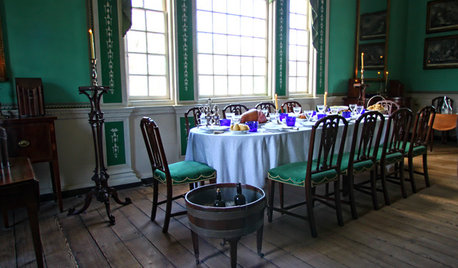Shishigashira - Did I kill it?!
kay21_utahzone5b
10 years ago
Related Stories

COLORWhen Color Could Kill: Stories From the History of Paint
Delve into paint's storied past — what you learn about its history and modern incarnations may surprise you
Full Story
MOST POPULARThe Perfect Houseplant for People Who Kill Houseplants
If you can fill a jar with water, you can keep golden pothos vine happy — and it will pay you back with cleaner air and a greener home
Full Story
Let's Dish! Did You Watch the Flipping Out Premiere?
Contemporary Remodel Kicks off Design Show's New Season. What Did You Think?
Full Story
EDIBLE GARDENSHouzz Call: What Did You Grow This Summer?
Let’s celebrate the homegrown fruits and vegetables of the season. Post your pictures and tell us about your harvest
Full Story
GARDENING GUIDESHow I Learned to Be an Imperfect Gardener
Letting go can lead to a deeper level of gardening and a richer relationship with the landscape. Here's how one nature lover did it
Full Story
FUN HOUZZEverything I Need to Know About Decorating I Learned from Downton Abbey
Mind your manors with these 10 decorating tips from the PBS series, returning on January 5
Full Story
DECORATING GUIDESThe Dumbest Decorating Decisions I’ve Ever Made
Caution: Do not try these at home
Full Story
WINTER GARDENING6 Reasons I’m Not Looking Forward to Spring
Not kicking up your heels anticipating rushes of spring color and garden catalogs? You’re not alone
Full Story
FEEL-GOOD HOME12 Very Useful Things I've Learned From Designers
These simple ideas can make life at home more efficient and enjoyable
Full Story
THE POLITE HOUSEThe Polite House: Can I Put a Remodel Project on Our Wedding Registry?
Find out how to ask guests for less traditional wedding gifts
Full Story






gardens1
kay21_utahzone5bOriginal Author
Related Professionals
Woodinville Landscape Architects & Landscape Designers · Billerica Landscape Contractors · Woburn Landscape Contractors · Aberdeen Landscape Contractors · Bridgeview Landscape Contractors · Los Banos Landscape Contractors · West Chester Landscape Contractors · West Haverstraw Landscape Contractors · Glenview Fence Contractors · Maywood Fence Contractors · Saint Louis Park Fence Contractors · San Fernando Fence Contractors · Shorewood Fence Contractors · Short Pump Fence Contractors · Winter Park Fence Contractorsgardens1
kay21_utahzone5bOriginal Author